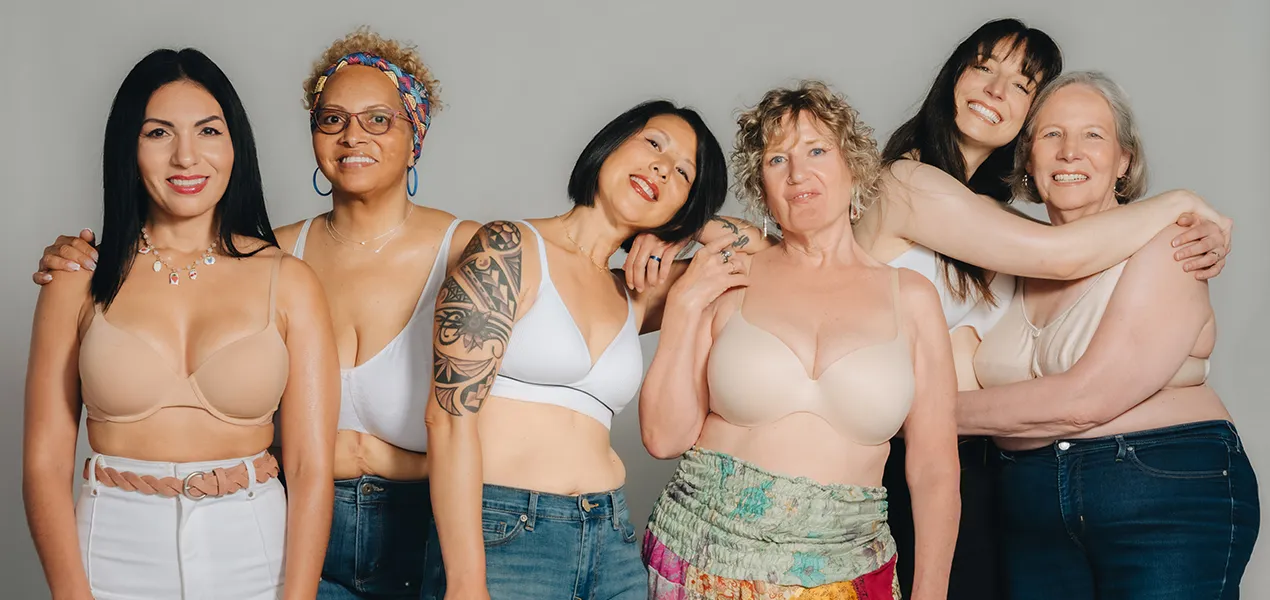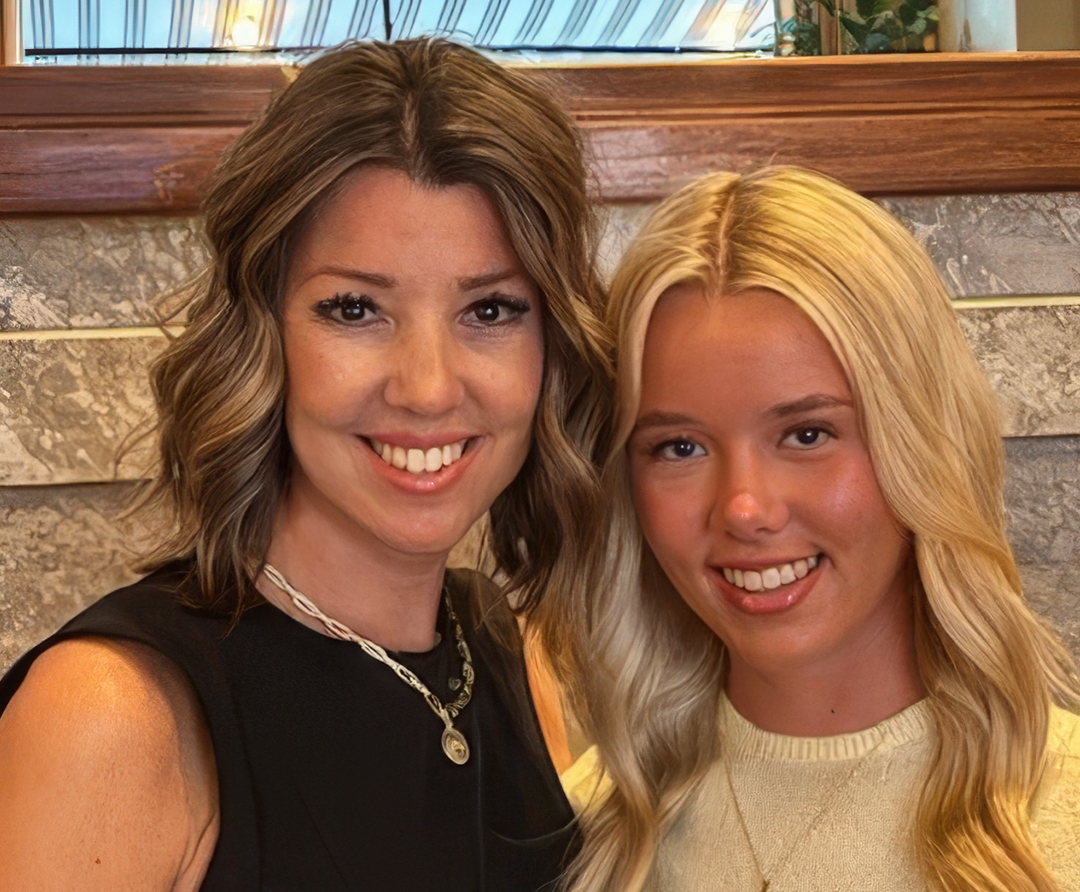It’s Time to #BustTheMyth About Breast Cancer and Mammograms

The Bust the Myth campaign aims to educate women about breast cancer risk factors, breast density and what to expect during a mammogram in a relatable way.
Lisa Rudnick, Vice President of Marketing discusses how much confusion still exists around breast cancer detection, and how the “Bust the Myth” patient education campaign aims to shatter misconceptions that may prevent women from receiving potentially life-saving mammograms.
When it comes to breast cancer, early detection is crucial given that the disease has a 99% five-year survival rate before it has a chance to spread.1 Unfortunately, misinformation can sometimes stop women from getting mammograms that can detect cancer sooner when it is often the most treatable. That’s why Hologic’s “Bust the Myth” campaign is making waves, clearing up common myths and empowering women to take charge of their health.
In a recent Harris Poll2 conducted on behalf of Hologic, among the over 1,100 women in the U.S. surveyed, nearly half of those who were recommended mammograms (48%) said they had skipped or delayed getting one. More than a quarter of women (27%) are not aware that women at average risk should start having annual mammograms at age 40, and a similar proportion (23%) didn’t know that leading a healthy lifestyle (e.g., maintaining a healthy weight, exercising regularly) does not completely negate breast cancer risk.
Quote from Lisa Rudnick
“While sometimes there is good information out there, there is also a lot of untrue and unfounded information on social media and other channels that women are reading and unfortunately even being misled. This can be a real barrier to early detection, and as a champion for women’s health, we have a responsibility at Hologic to help debunk these myths and educate women on the facts.”
#BustTheMyth aims to spread awareness and empower women to take charge of their breast health
To clear up some of these common misconceptions around breast cancer and mammograms, Hologic launched the “Bust the Myth” patient education campaign last year. It reaches patients in multiple ways, including traditional and social media channels, email campaigns and educational materials for doctors’ offices.
“The campaign is designed to be engaging and empowering, making screening feel more approachable for women,” said Lisa. She noted that the visuals — showcasing real women from all over the world — create a relatable and positive message. “We want women to see themselves in it.”

As a mom, Lisa often hears about the latest social media trends from her daughter, who is in college pursuing a healthcare career. “It’s fascinating to hear from her perspective what she thinks about breast cancer, even at 18,” said Lisa. “The other night she was watching a WTA athlete talk about her experiences with breast cancer and was asking me what does this or that word mean — and it’s great that she’s asking questions.”
Educating women on what happens during a mammogram
The Hologic/Harris Poll survey also found that many women have skipped or delayed recommended mammograms because they overestimate how long a mammogram takes or worry about discomfort. According to the survey, about 2 in 5 women who have skipped or delayed a recommended mammogram say it’s because they did not have time (23%) or because they were concerned it would be painful (19%). While it can be uncomfortable, each compression only lasts several seconds, and the visit usually takes less than a half hour depending on the facility.
Hologic also just released a new video that walks viewers through the process — from arriving at the healthcare facility to understanding how and when results are shared.
Technology also continues to advance based on feedback from healthcare providers and patients, to make the exam process more comfortable. With Hologic’s new Envision™ Mammography Platform, the scan itself takes about 2.5 seconds3 and the technology features tilt positioning designed to adapt to patients.
Besides educating women on what to expect for their first mammogram, the Bust the Myth campaign aims to emphasize the importance of regular screenings.
“For women who have had a mammogram but maybe aren’t getting their screenings regularly, we want to educate them on the importance of monitoring their breast health consistently,” said Lisa. “Not only is it important for doctors to see breast changes over time, but a woman’s risk levels are increasing with age and again, when breast cancer is caught early the chances of survival are typically high.”
Arming women with knowledge about breast density and what it means
Breast density, which is a measure of how much fibrous and glandular tissue there is in the breast, is a risk factor that has received more attention recently in light of new requirements by the FDA requiring all mammogram reports sent to patients must include information on breast density.
While the recent increase in awareness is a good thing, Lisa notes that the information out there isn’t always accurate — which is where Bust the Myth comes in. Nearly 2 in 3 women (66%) are unaware of the link between breast density and increased risk of breast cancer, and 26% incorrectly believe density has no impact on risk.
“So many women are starting to hear what their density is, but they don’t necessarily know what that means,” said Lisa. “The higher the density the higher the risk of breast cancer — so it’s important that they know it correlates with their risk. It also changes over time, so the density you have at 30 might be different than the density in your 60s. And breast density is not something than can be felt; only a mammogram can determine it.”
Having dense breasts not only increases a woman’s risk of developing breast cancer, but it also makes it harder for radiologists to see cancer on mammograms. Hologic’s 3D™ Mammogram is the only mammogram FDA approved as superior for women with dense breasts compared to 2D.4,5
Addressing concerns about receiving results
One in five women who have skipped or delayed a recommended mammogram (20%) say it’s because they feared they would find something. This number rose to 30% among women with a family history of breast cancer.
“Fear of getting a positive result is a very common and relatable concern — but not having that knowledge is worse because the more you prolong the exam and potential treatment if something is found, the more the cancer can progress,” said Lisa. “If it’s detected in its earlier stages, there may also be an opportunity for treatment options that are potentially less invasive.”
Sometimes, patients are called back for additional screenings after a suspicious area is found, but later it is determined to be a “false alarm.” While these situations may cause considerable stress and anxiety for the patient, they are happening less frequently as mammography technology continues to advance.
“With the latest scientific breakthroughs in mammography, including AI, we’re seeing fewer false positives and faster, more accurate results,” said Lisa, noting that at some facilities, with how fast AI is able to flag results, a patient can undergo additional testing on the same day if a suspicious area is found.
Shattering myths, saving lives
Lisa’s advice to her own daughter as she begins a career in healthcare, and to women everywhere, is simple: “Don’t let myths or fear around healthcare choices hold you back. Take the time for yourself. Get your recommended screenings. And if you have questions, ask. There is no shame in wanting to understand your health, and it’s information that could save your life.”
Through campaigns like Bust the Myth and increased education around breast cancer and screening, Lisa hopes the next generation will be even better informed. “Bust the Myth is a powerful movement, giving women the knowledge and confidence to take control of their health and future.”
To learn more, visit Hologic.com/BustTheMyth.

